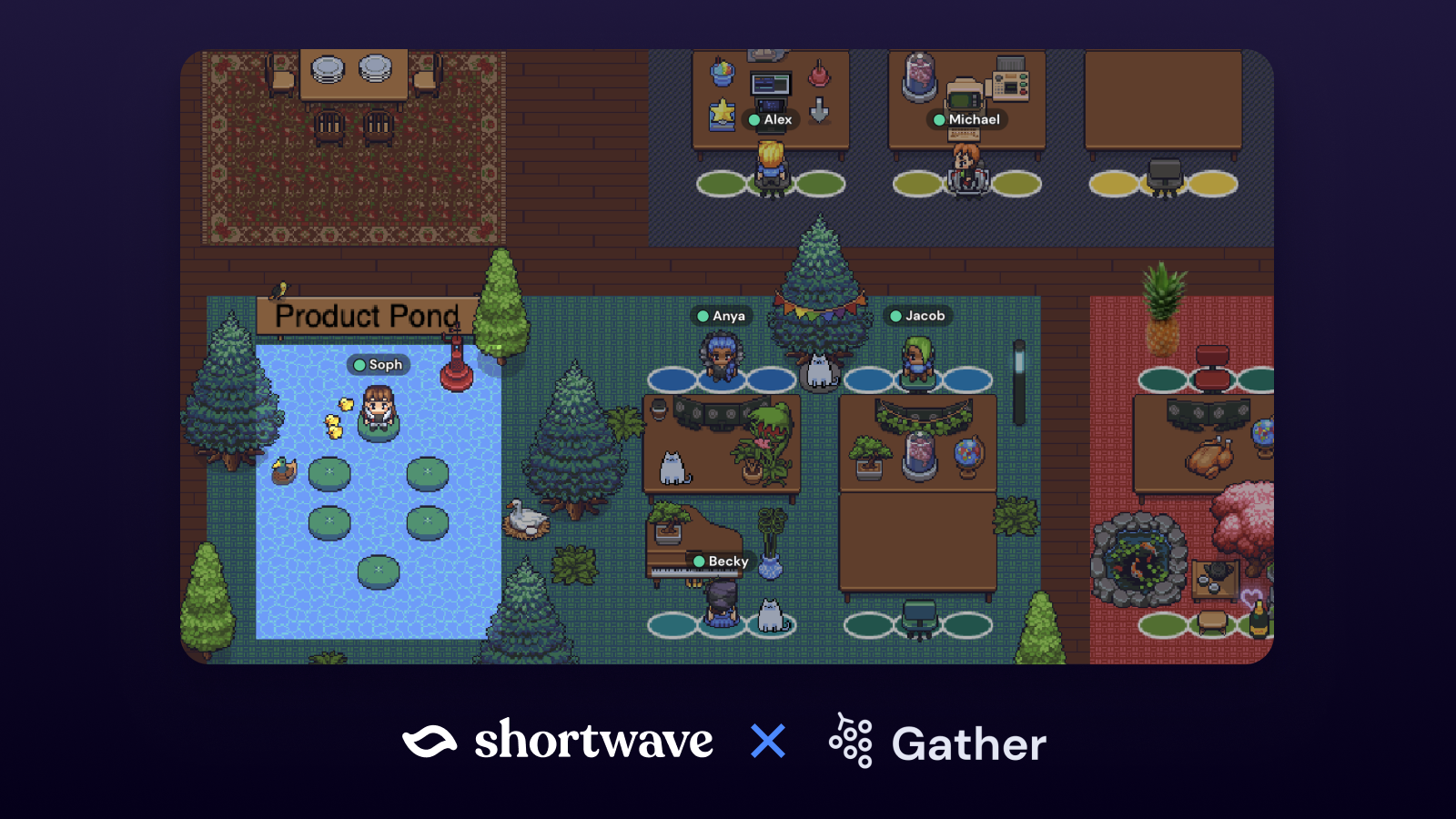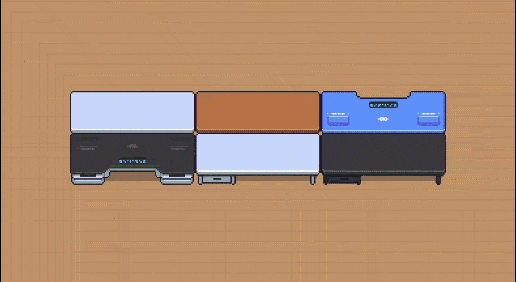May 9, 2023
Gather CEO Phillip Wang on the future of remote work

Remote work has been a growing trend for several years, with the pandemic only accelerating the shift toward virtual workplaces. Companies have shown a stronger preference towards remote work since they get to access a wider pool of talent without geographical limits, and in return, employees can enjoy more professional flexibility and a better work-life balance. Despite the countless benefits to working remotely, one major downside is the increased isolation from your team. Lack of social interaction, limited face-to-face communication, difficulty in building a sense of community, and the absence of a structured environment can lead to feelings of disconnect among the company, making it more important for remote workers to seek out means of combating this isolation.
Gather is a virtual environment that makes distributed-team interactions more human by recreating metaphors that exist in physical spaces. It has a video-game-like UI that allows users to move around, communicate with their coworkers, and express themselves in ways that go beyond the two-dimensionality of apps like Zoom and Google Meet.

As a remote-first company, Shortwave has experienced first-hand Gather’s capacity to foster culture across a very distributed team. While we have coworkers spread all the way between San Francisco and New York, Gather gives us the platform to do everything from morning stand-ups to Friday game sessions without missing a beat. For companies like Shortwave, Gather is the key to bridging the gap between remote workers and human connection.
We had the chance to sit down with Phillip Wang, CEO and Co-founder of Gather, to learn more about the future of remote work.
How does the Gather team use Gather internally?
Phillip: Gather is this tool that marries virtual worlds and video chat. What it lets you do is recreate a lot of the metaphors that you would usually have around a physical space. We use it as the office, just as you would in the physical world, where we have all our meetings. Folks sit down at their desk and you have a lot of those serendipitous desk conversations, or hallway conversations. The goal here is to really be able to connect outside of just scheduled meetings, right? So for example, if you need someone real quick, they'll just ask you a question, providing those small but frequent interactions that you'd have in an office.
What are some of the limitations of remote work? Can it ever replace an in-person experience?
Phillip: I think there are still a number of interactions that Gather doesn't quite replicate today, like the fluidity of in-person where it's so easy to tell someone's available. That's stuff that we've made some progress on, but I think it's still not all the way there yet, and that's actually the stuff that we're working on today.
I think there's another side that is just not something that will necessarily get solved by tools. Companies will need to be more intentional about it, like time zones for example. A lot of remote teams are globally distributed, and if you're not careful or very clear about what you expect from people in different time zones, I think it's gonna cause some trouble in terms of teamwork and collaboration.
A lot of companies are moving to a hybrid environment. Do you have thoughts on where Gather fits into this, both now and in the future?
Phillip: I think there are two different types of hybrid [environments] here. One is where there's some percentage of the company that is fully remote and some percentage that is not. There's another one where people come in like two days per week. I think in both cases Gather is either used for the folks who are remote with the people elsewhere in the company, or it's used on the days when people aren't in the office. That's how we're currently used and actually, a decent number of our customers are hybrid over time. I think this is a general theme with the Metaverse broadly. I think we want to figure out how it integrates into the physical because the way we talk about, actually, the way we think about these things is, it's not about a separate world. It's more about kind of like a layer over the physical world. We want to figure out how it interoperates as much as possible.
Do you have any advice on how companies can build successful remote or hybrid work environments?
Phillip: One policy we instituted is trying to take a stance on how we don't want all work to be async. When you're working, come into the Gather office when you're not, leave. Obviously, people work by their local working hours, so that's kind of how it is. But that way at least we can get more of the synchronous work.
We have a very globally distributed team [so] we set up two, two-hour, global meeting blocks. One was for people in America's timezone, and the other one was for people in the European time zones. That way, people would at least know when to find each other and you wouldn’t need to log in at night to meet people from another time zone. At the very least it’s clear when you can schedule meetings and expect to find somebody.
What other productivity tools do you use to enable your remote team?
Phillip: I use Shortwave. Me and the folks on the team use Shortwave personally, it's our favorite email client and it's super fast and simple to use. After trying a bunch of different email clients, I'll add. Other than that, we use Slack, Linear, Google Drive, and Notion. A lot of those are common culprits. As for selecting tools, I don't know if there's necessarily one common theme, but it's usually just like, hey, does it work extremely well? It's not a top-down approach with our teams, it’s more like a bottom-up to adopt something. I think for a lot of these tools it's pretty zero-to-one, like, did people really love it or not?
When you launched Gather, your vision was to build the metaverse—is that still your vision?
Phillip: That has always been our vision and it is something that we were working on way before it became a buzzword, so it is still true to what we are trying to build. As it pertains to our approach, I think we're really trying to cut through the buzzword to [see if] we can just build a great product that people will use regardless of whether or not they know what the word metaverse is or if they associate that with us. And really just show people the power of these virtual worlds as a new kind of user experience in this design paradigm.
I think the underlying conviction is that the ways that we connect socially online are very underexplored and especially this paradigm of virtual interaction is extremely powerful not just for the use cases we're working on today, where it's like work office use cases, but more broadly like social use cases, communities. We'd love to see what we could do for education in the future. So I think that's largely what we're really, really excited about long-term and so right now I think we're proving it out use case by case.
What are the hardest challenges that you’re facing as a company right now?
Phillip: We're just trying to make sure we have the right balance between trying extremely new innovative things [and] moving really quickly while maintaining a sense of quality. At the end of the day, we are a work tool. And one thing we've learned over time is that maintaining a high bar on quality is also equally important to our users. I'll say that's the biggest, broadest theme across the whole organization.
Remote work that actually works
In order to build a fantastic remote work environment it’s important to listen and learn from your team first. How and when do they like working, and what tools empower them to be most productive? Creating time blocks for collaboration and investing in tools that enable communication across your team is essential to building a world-class working environment.
Whether you're trying to maintain some of the delightful intricacies of office culture, or spark a little extra joy when opening your inbox, emerging technologies put productivity in your hands.
Ready to feel like a team again? Try Gather and Shortwave to make remote work frictionless.
Sign up for monthly updates
Get a roundup of the latest feature launches and exciting opportunities with Shortwave